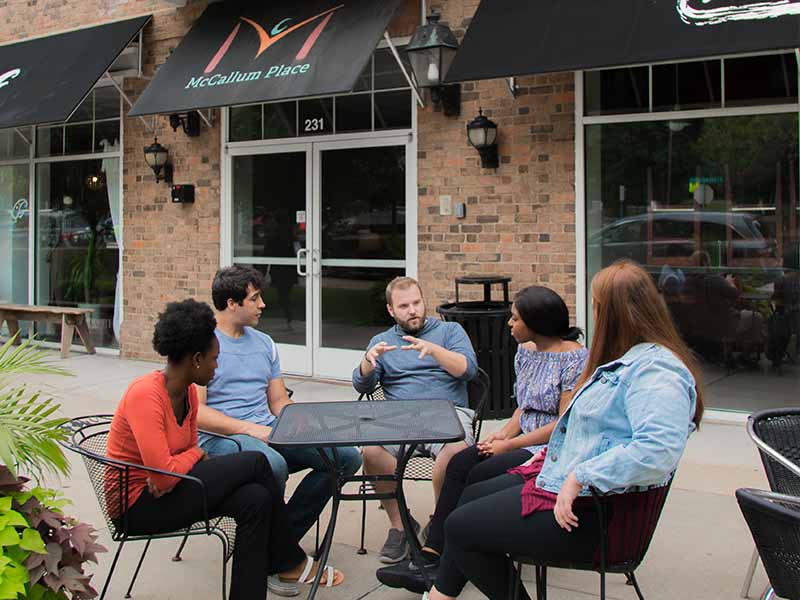by Mary Laffey Adams, RN, MSN, Holistic nurse, Kripalu yoga instructor
As a Kripalu yoga instructor at McCallum Place for the past seven years, I have seen those who participate in the yoga sessions during treatment reap many benefits. Patients leave at the end of our hour-long group saying things such as: “I feel so much more relaxed!” “I am calmer now.” or “My thoughts have settled down.” Such are the gifts of yoga, a physical, mental and spiritual practice, that one ancient sage guaranteed would “still the fluctuations of the mind.”
In our yoga sessions, we get to that quieter place in the body and mind by going through what I think of as the back door. I like to take everyone around that way because the eating disorder (ED), as patients often personify the eating disorder mind, is at the front door, keeping constant watch for any intruder (healthy eating, attitudes, thoughts, and actions) who might ask him to leave. With ED looming over everything, the body and mind are in a continuous state of stress. Breathing becomes restrained and shallow, digestion is inefficient, muscles are tense, jaws are clenched, the heart is compromised; the body chemistry and physiology are in the state of high alert. Tension is held throughout the body and this strain becomes habitual.
Being compassionate is the first step into the backdoor of calm awareness. So, as we come to the yoga mat and do something as sweet as take a deep breath and let out a soft sigh and relax the shoulders just a bit, we are offering our bodies a little oxygen, a little acknowledgement that things have been tough and a little release and opening. The body and mind start to get the message, “everything is already okay.” ED is oblivious to what is slipping in: comfort in the body, mind and spirit.
We focus a lot on the breath in our yoga sessions. A nice, big cleansing breath or a long, slow breath is so nourishing! It never fails, after a few minutes of breathing we can hear tummies rumble. This is because the relaxation response starts to kick in and when the body is in a calm, relaxed state, the digestive track says, “Okay, let’s get moving!”
In addition to breathing and relaxing, we also focus on feeling, watching and allowing sensations in the body. ED will have people constantly judging body places like the belly, thighs, arms, wrists, and ED will never have anything good to say about any of them. Feeling sensations takes us away from the habitual criticism of body places because we are not really feeling the tissue, but rather feeling what going on around, inside, between and beyond the tissue. We might start with a safe place, like the palm of the hand and tune-in to the sensation in that area. Words such as tingling, humming, vibrating, or whooshing are used to describe these new feelings that may never have been noticed before. The habit of criticizing is absent because this is a novel way of feeling the body that does not allow for evaluation, we are simply watching and allowing whatever is “happening” there. Patients often voice relief and a sense of freedom, having felt their bodies in this new way.
These simple Kripalu yoga practices of breathing, relaxing, feeling, watching and allowing, help in the healing from an eating disorder. They aid digestion, trigger the relaxation response, and offer a new way of experiencing the body. Most importantly, the door of calm awareness is opened, the true, healthy self is waiting inside, and there is a sense of coming home.









